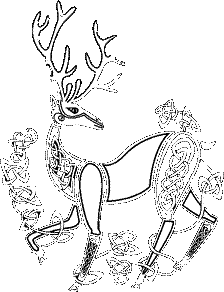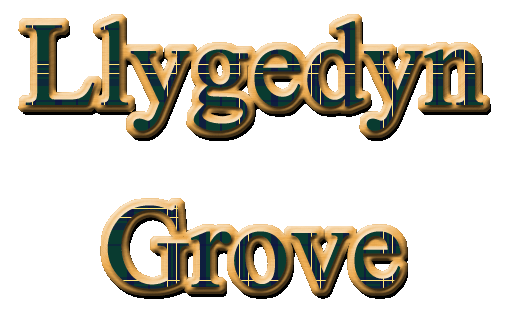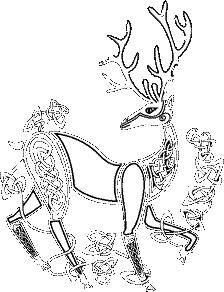


 |
 |

|
| |
|
|
The Celtic Path

What does it mean to follow a Celtic Path? Such a simple question can be difficult to answer, for the Celtic Path flows and twists as often as a knotwork pattern. When a person chooses the Celtic way, the first question they should ask is, "Which system do I wish to follow?" Perhaps it is the spirituality of the early Celts (the tribes of Iberia, Gaul and the British Isles), perhaps it is Celtic with Roman influence, or Neo-Wicca with Celtic flavor, or...the point is that during various ages, the Celtic spiritual system has changed, being assimilated by the new cultures that gradually inhabited the Celtic regions. The era chosen to study can provide drastically different belief systems. For example, the Celtic Pagans did not believe in a four elemental system. The four elemental system of earth, air, fire and water was a Greek philosophy carried by the Romans into the Celtic culture. The closest system the Celtic peoples had was Sea, Sky and Land. Through this example, we can see that whichever era is followed can completely change the views and beliefs. When following a Celtic Path, scholars and Celtic Reconstructionalists generally agree upon nine "points" that a person should incorporate into their Celtic Path in order to live spiritually the way these people did.
The first is a reverence for the deities of the Celtic Pantheon. These deities can be found in many Irish and Welsh mythological tales, as well as in archaeological evidence excavated from those lands. The Celtic people did not believe in a dualistic god and goddess system. Their pantheon was comprised of many individual beings that governed over particular skills, trades and locations. For example, while Danu is considered an earth mother, she is not perceived as a creator of the earth. She is a caretaker, a goddess of the fertility that brings abundance from the land, and the Mother of those called the Tuatha de Danaan. In the Celtic system, there is not an ultimate deity of creation or superiority. Each individual and tribe honored many deities for their particular aspects and individual creations.
Following the deities, is a reverence of the ancestors and the spirits of the land. The Celtic people maintained a strong connection with their ancestors, as is evident in the bardic requirement of knowing and reciting the genealogies of each individual. The ancestors were honored in ceremony, in prayers, and it was common for ancestral shrines to be set up by both families and tribes. The land spirits were also honored with shrines which can be found in great abundance throughout Western Europe. The people would make offerings to these land spirits, providing them with milk, oats, mead, crafted items and other gifts. In America, it must be remembered that the spirits of the land are often of Native American origin, and offerings to them might include tobacco and corn.
Third is a connection with the history. A part of the Celtic Spirit is a love of the past, and the stories and knowledge it holds. This passion is so strong, historical references can be found in nearly all Celtic poems and tales. Children were taught the history of their people through bardic stories and druidic schools, so they might carry the knowledge forward for future generations. History can be studied in many ways. For some it comes through a study of the mythological sagas, for others an understanding of the cultural background, and yet others through a learning of the Gaelic language. The exact study is not as important as the fact that the history is being learned, maintained and passed into the hearts and the minds of the people.
Fourth is an understanding and working knowledge of Celtic Cosmology. The Celtic people viewed everything in threes: Sea, sky and land; male, female and neuter; fire, water and earth. This triunic thought pattern influenced every aspect of they way the universe was viewed. Each realm, or aspect, was viewed as a cauldron that was supported by three legs. Each leg, in turn, became its own cauldron that was supported by three more legs. The way this system works can be seen in this example: The Cauldron called the universe is supported by the three legs of sea, sky and land. The Cauldron called the sea is supported by the three legs of water, moon and spirit. The Cauldron called the spirit is supported by the three legs called intent, plenty and emotion. By working in triunic thought, rather that two's or four's, we can draw ourselves closer to the Celtic perspective of the patterns of the universe.
Fifth is living by the Celtic virtues. Found both in the local tales and regional mythologies, the three great virtues are strength, truth and generosity. Strength was considered to be both strength in one's arms, as well as, the strength of courage to face one's fears and overcome obstacles. Truth was seen as fulfilment of one's words, honesty in actions, and awareness of the soul. Truth was essential to every action and word, for truth was the judgement of the soul. In Celtic society, oath breaking was not tolerated, deceit of action shunned, and false judgement chastised. Generosity included being generous to the weak and needy, and being hospitable to guests, friends and strangers. While knowing the needy from the greedy was important, to turn away an open hand was horrendous. One Celtic poem even states that to be inhospitable could topple a king. In like kind, generosity is never to be taken advantage of.
Sixth is the great love for, and practice of, poetry. Poetry was vital to the Celtic way. It was called Imbas, poetic inspiration, the fiery passion of the soul. Poetry was intrinsic to the magical structure, it was created to honor one's achievements, and it was punishment for the unworthy. Weaving its way through all the Celtic tribes, each person knew at least bits of poems. The poetry of the Celtic people was filled with rich imagery, soul spilling emotion, and passionate verse that transported the listener into alternate realities. The tales say that for a Celt to be balanced, they must make poetry, for poetry is the force that moves the worlds.
Seventh is the ideal of inclusiveness. People from many cultures were welcomed into the tribes of the Celts. Anyone worthy was taken in through marriage or adoption. This is to say that anyone, regardless of race or cultural background, can be a Celt. Within this spectrum of inclusiveness was a respect for women and homosexuality. While women did not have a perfect life, the Celtic culture provided women with more equality and honor than any European society since. As to sexual preference, the Celtic people did not show a difference between heterosexuality and homosexuality; the idea of sexual prejudice was unheard of. Sex was sex, honored among the individuals for the pleasure and bonding it created.
Eighth is strong sense of self, combined with the beliefs of what was right and wrong, was prevalent among Celtic society. Pride and boasting was a favorite pastime, fights often breaking out over who was the better person. The Wiccan ideal of "an ye harm none" is not found in the Celtic philosophy. However, this is not to say that one can or should go about aimlessly creating harm. Honor was of the utmost importance to the individual and the tribe. If an individual or tribe's honor was harmed, then it was their responsibility to protect this. The sagas are full of tales about warriors, kings and tribes dying to uphold their honor, and avenge those who were harmed without just cause. To be dishonored was a grave insult, and to not uphold honor could reduce one's position in the social framework. A sense of right and wrong was governed by rules and laws that each person abided by, for they knew that each action was a thread which held the whole fabric of the universe together.
And finally, the Celtic people had a strong sense of community. Just as three legs are required to keep the cauldron standing, each individual in the community was a leg to keep the tribe standing. Fosterage was common, for a person could be raised within the social hierarchy this way. Schooling was important with many children being sent to druidic schools to learn history, poetry and skills. The Celts strove to create healthy relationships between all the people, sharing skills, food and drink, and knowledge which could progress the group as a whole. Gossip, rumor mongering or unjustly speaking ill of someone could result in banishment, for they realized that such faults could tear a community apart and result in the loss of honor. Community, with strong relations, should be every Celts goal.
In closing, following a Celtic Path is more than showing up for a ritual on a Saturday night, or speaking aloud to a Celtic deity without the knowledge of who They truly are. The Celtic Path should blend into every aspect of our lives, making it whole and complete.
By: Erynn Rowan Laurie
Last Update: December 10, 2006
© Copyright 1998-2004, Llygedyn Grove
All rights reserved